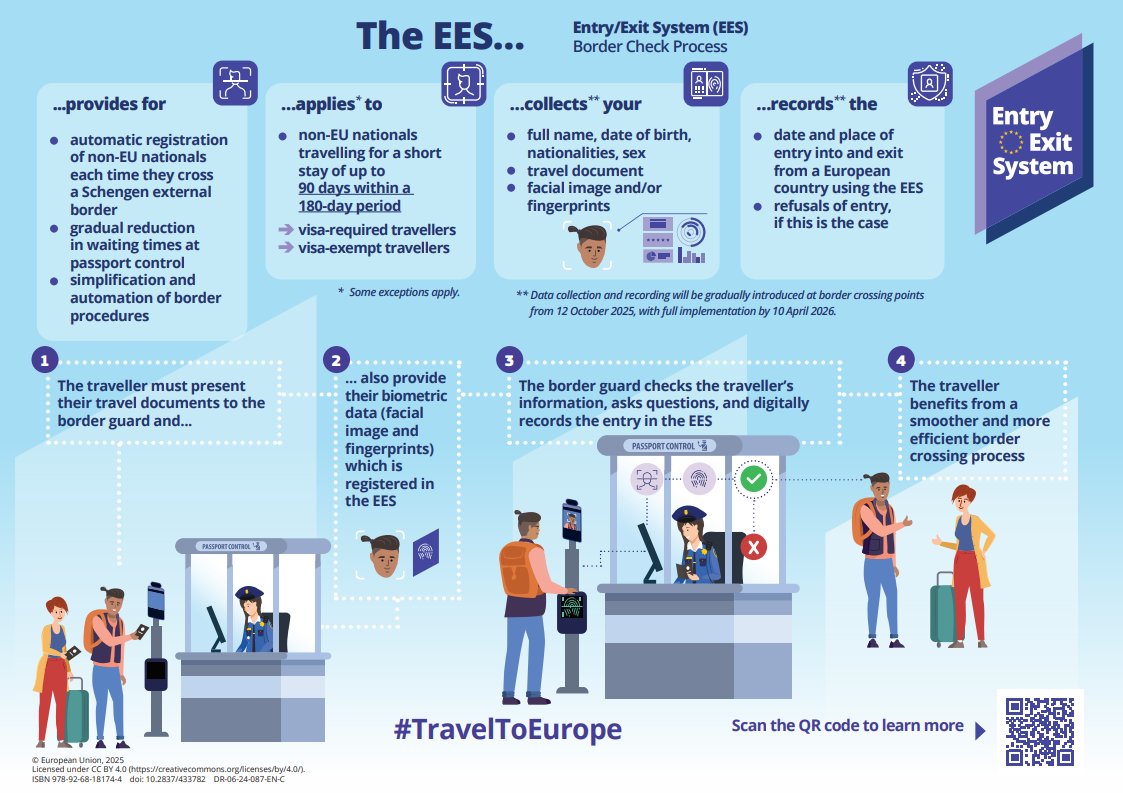New Entry/Exit System (EES)
The Entry/Exit System (EES) is the new border management system of the European Union. Its purpose is to record the entry and exit of travelers from non-EU countries who visit the participating European countries for short stays (up to 90 days), each time they cross an external border.
Starting from 12 October 2025, the 29 European countries using the EES will begin introducing the system gradually at their external borders, over a period of six months. During this transition, traveler data may not be collected simultaneously at all border crossing points. Once fully implemented, the system will make border checks faster, safer, and simpler for all travelers.
Which countries use the EES
The system applies at the external borders of the following countries: Austria, Belgium, Bulgaria, France, Germany, Denmark, Switzerland, Greece, Estonia, Italy, Iceland, Spain, the Netherlands, Croatia, Latvia, Lithuania, Liechtenstein, Luxembourg, Malta, Norway, Hungary, Poland, Portugal, Romania, Slovakia, Slovenia, Sweden, Czechia, and Finland.
Who will be registered in the system
The EES applies to nationals of non-EU countries traveling to participating European countries for short stays (up to 90 days within any 180-day period).
Traveler information will be recorded electronically in the system, whether a visa is required or not.
Entries, exits, and any refusals of entry will also be stored in the EES.
Certain travelers are exempt from registration — such as those who have the right to move freely within the EU/EEA.
You can find more details and helpful information here.
